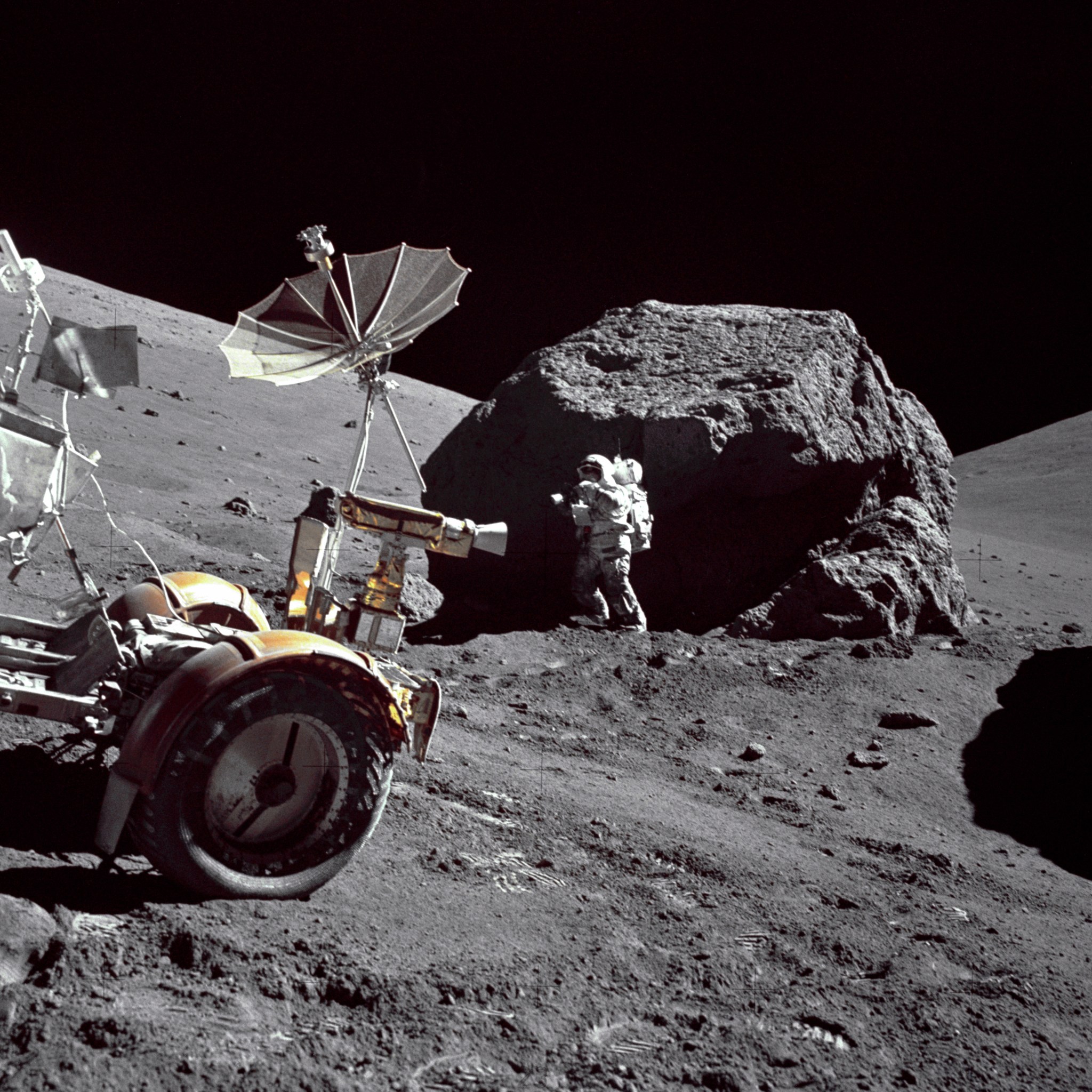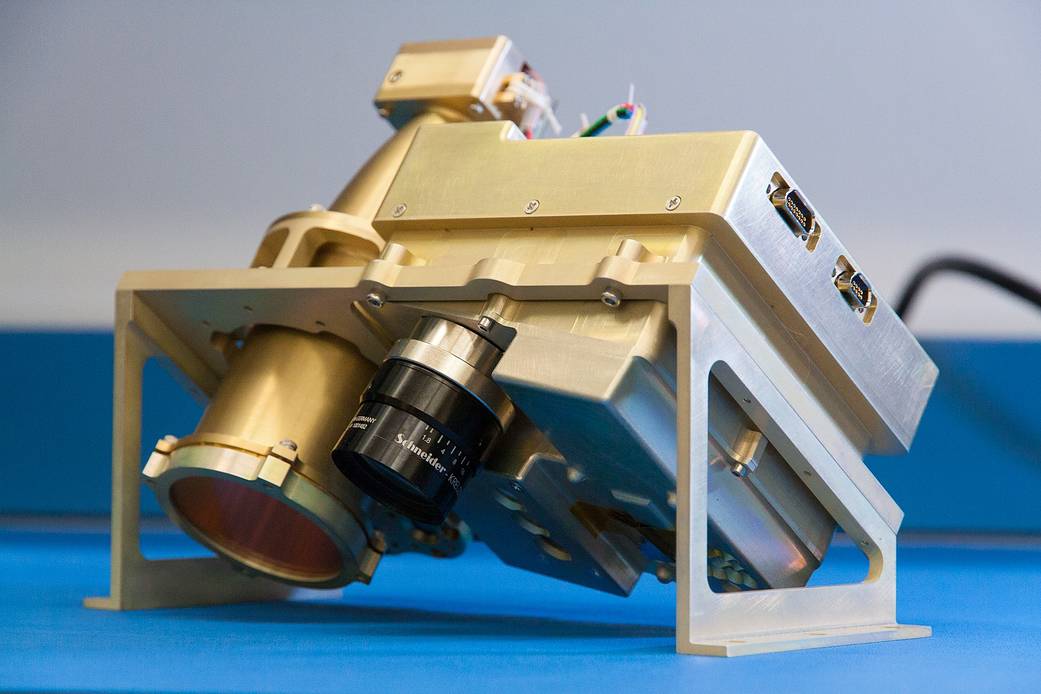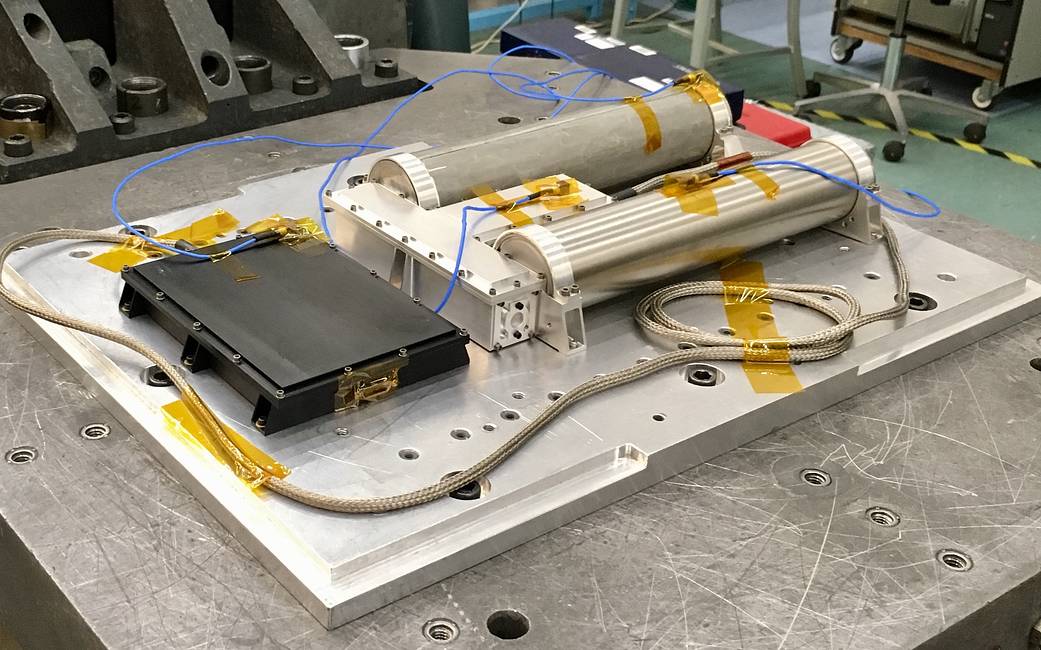On the Moon, scouting out water and mapping its whereabouts are important next steps toward humans living on the surface.
Launching one pound of any material into space costs thousands of dollars. Since a gallon of water weighs more than eight pounds, it’s easy to see that the ability to generate water, air and fuel in space could represent enormous cost savings for future deep-space missions. And that would make human exploration of the Moon, Mars and other destinations more affordable and sustainable.
But where will we find the raw materials to use? We already know that the Moon is a complex world full of familiar minerals and gases. It even holds reserves of water ice in some craters at its poles. Measurements from spacecraft orbiting the Moon tell us there is also material spread across the lunar surface that could be more water or a closely related resource, hydroxyl.
Two tools from NASA’s Ames Research Center in California’s Silicon Valley, will be delivered to the Moon to find out more – the Neutron Spectrometer System and the Near-Infrared Volatiles Spectrometer System. Through contracts with NASA’s Commercial Lunar Payload Services, or CLPS, commercial partners are building lunar landers to carry these instruments to the Moon’s surface. The measurements taken on the lunar surface will help researchers understand what form the Moon’s hydrogen takes and how it behaves in the lunar environment. Subsequently, NASA’s Volatiles Investigating Polar Exploration Rover, or VIPER, will carry three instruments, including NSS and NIRVSS, as well as a mass spectrometer and a drill that are capable of detecting the location and concentration of water ice as it roams around the Moon’s South Pole.
The Neutron Spectrometer System
Sensing the amount of hydrogen in the subsurface is the job of the Neutron Spectrometer System, or NSS. It can measure the total volume present, up to three feet below the surface. NSS works by measuring changes in the number and energy of particles called neutrons that are always coming from the Moon. When these tiny particles strike something that’s about their size – like a hydrogen atom – they lose a lot of their energy. That’s a change that NSS can detect and use to infer the presence of hydrogen.
The Near-Infrared Volatiles Spectrometer System
The second tool can’t see underground. Instead, the superpower of the Near-Infrared Volatiles Spectrometer System, or NIRVSS (pronounced “nervous”), is the ability to tell the nature of the hydrogen it encounters. It could belong to water molecules or to hydroxyl or just exist as hydrogen atoms – any of which could be a useful resource, for tasks such as making fuel for space exploration.
NIRVSS features a spectrometer, a device that looks at light emitted or absorbed by materials to help identify their composition. In the lunar soil, that will mean detecting the different types of minerals and ices present – including frozen carbon dioxide, ammonia and methane, scientists expect – and differentiating between water and hydroxyl. Two other instruments on NIRVSS will reveal the precise characteristics of the locations it studies. The Spectrometer Context Imager is like a broad-spectrum camera that yields a seven-color image revealing the composition of the soil in fine resolution. The Longwave Calibration Sensor gives surface temperature at very small scales.
Does Moon Water Move?
Scientists also have big questions about the mobility of lunar water. This isn’t flowing liquid water, but individual water molecules. Heated by the energy of sunlight, they could be shot upward like tiny cannonballs, until gravity pulled them back to the surface. The Moon’s delicate atmosphere is so thin that the water molecules would never actually bump into each other as they flew on these trajectories over the surface. Some researchers think that, through this random movement, water could hop across the surface, with some landing in ultra-cold craters at the poles, where it would freeze out into the lunar soil and remain stuck. In craters where the sun never shines, a reserve of ice could have built up this way over billions of years.
Scientists don’t know if this process is actually at work on the Moon, but orbiting spacecraft observations suggest the amount of water or hydroxyl across the surface is rising and falling, making scientists think water molecules may be moving around. If the lunar water really is that mobile, then those polar ice reserves may be building up, even today. If it’s not, another possible explanation could be that this water is ancient. It could have come from volcanic activity very early in the Moon’s history, or may have been deposited on the Moon long ago by one or two large comet impacts, then buried, stirred up and redistributed by subsequent smaller impacts in the billions of years since.
From their perches aboard the new lunar landers, NSS and NIRVSS will complement each other in tracking how hydrogen levels change both at the surface and deeper down, and help solve the mystery of whether water is still being supplied to the Moon’s poles.
Mapping the Moon’s Resources
The first tests of the performance of these instruments on the lunar surface will occur with their delivery via commercial landers through NASA’s CLPS initiative. Following these initial tests, the VIPER rover will use NSS to take measurements continuously as it moves over the lunar landscape to sense hydrogen buried below the surface. By locating promising sites, it will tell VIPER where to drill into the ground, bring up a soil sample and take a closer look. NIRVSS, alongside the Mass Spectrometer observing lunar operations, or MSolo from Kennedy Space Center in Merritt Island, Florida, will identify the components that make up that soil and the concentration of potentially accessible resources like water ice.
Together on a rover, these tools for lunar prospecting will provide the data needed to create maps of resources awaiting human explorers on the Moon and identify hot spots of critical materials. The ability to harvest the ingredients to make products and fuel directly at deep space locations will be an important step in truly pioneering space – from the Moon to Mars and beyond.
Milestones:
February 2019: NASA selects both NSS and NIRVSS for delivery to the Moon by commercial partners providing lunar payload delivery services.
October 2019: NASA announces the VIPER mission to map water ice on the Moon’s South Pole using NSS and NIRVSS alongside other instruments.
Partners:
The Neutron Spectrometer System was jointly developed by NASA’s Ames Research Center and Lockheed Martin Advanced Technology Center in Palo Alto, California.
For the Near-Infrared Volatiles Spectrometer System, NASA’s Ames Research Center partnered with the Brimrose Corporation, in Sparks, Maryland, to develop the spectrometer.
For news media:
Members of the news media interested in covering this topic should get in touch with the science representative on the NASA Ames media contacts page.

































